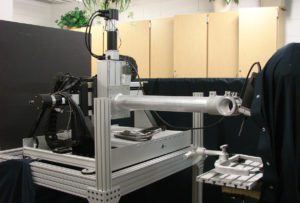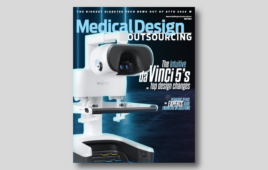
The automated drill accelerates bone removal from 2 hours with a hand drill to 2.5 minutes. [Photo credit: University of Utah]
Researchers from the University of Utah developed the device to replace typical hand drills in cranial surgery, which needs intricate openings that avoid sensitive structures. The development team included Dr. William Couldwell, a neurosurgeon at U of U Health and A. K. Balaji, associate professor in mechanical engineering. The team created both the computer-automated drill and the software that sets the cutting path.
As proof of principle, researchers designed the drill software to perform a translabyrinthine surgery, a procedure used to expose benign tumors that form around the auditory nerves. The cutting process starts through the temporal bone and circumnavigates the ear. The procedure is particularly difficult because it must avoid several sensitive features, including facial nerves and the venous sinus, a large vein that drains blood from the brain. Risks of the surgery can include loss of facial movement.
First, CT scans are collected to gather bone data and identify the exact location of nerves, major veins and arteries. Then the surgeon uses those data to choose the optimum path of the drill and input a safety barrier program when the drill is within 1 mm of sensitive structures.
The computer-automated drill mills out bone faster than hand-drilling tools. What would take an experienced surgeon 2 hours to do with hand-held tools now takes less than 3 minutes. The shorter surgery could lower the chance of infection and improve post-operative recovery. It also has potential to substantially reduce the cost of surgery, because it shaves hours from operating room time.
The researchers predict that the drill could be used in a variety of surgical procedures, including hip implants. They are actively examining opportunities to commercialize the drill and make it more widely available for other surgical procedures.
The research was funded by a Technology Initiative Grant through the University of Utah.
[Want to stay more on top of MDO content? Subscribe to our weekly e-newsletter.]





Just how cool is that!!!!!
Technology cuts both ways (pun intended) – masterful work Dr. William Couldwell, and A. K. Balaji.